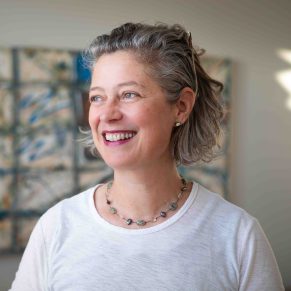Discover 200 Years of Canal History at New Waterfront Exhibit

Buffalo’s place on the Erie Canal led to the creation of this city, kickstarted its future wealth, shaped the state – and the nation. The history, surprising and full of stories – the water highway that transported commerce, brought waves of immigrants here and let travelers spread the word about women’s suffrage and abolition – has been hidden, until now.
The Buffalo History Museum’s Waterway of Change exhibit opened at the Canalside waterfront in the Longshed building – a canal warehouse replica – in conjunction with the canal’s bicentennial. It was designed to clarify a complicated history and help visitors explore the impact of the canal, including its connection to the people who lived here, built it and passed through.
They included immigrants heading West to start new lives, workers and engineers, and people who made their living on the boats and along the route – from merchants and sailors to entertainers.

“I think the Waterway of Change is a really good effort at telling a very complex narrative of the Erie Canal in ways that haven’t been fully explored in one place before,” said Mike Vogel, on the exhibit content team and former director of Erie Canal Harbor Development Corporation. “It’s not just about the building of the Erie Canal, which is an amazing story in and of itself with self-taught engineers doing one of the 19th century’s engineering marvels – establishing engineering as a profession in the United States at a very early point in our national development …Come inside and explore.”
The history on display includes photographs, artifacts, narration and stories about distinct subjects – women, entertainers, Black Americans, immigrants, local Native Americans, the Senecas, and engineers. An animation on the wall shows the canal’s route across the state and how cities grew along its shores. It let goods, and ideas, move fast. Before the 1825 opening, it took three weeks and cost $100 to move a ton of goods to New York City. Canal transport rates plummeted to $4 a ton and an eight-day trip.
The entertainment and vice section surprises with findings from a nearby archeological dig – a set of brass knuckles, dice and dominoes. The Buffalo harbor was a rough and tumble place with lots of ways to spend the payday cash that followed weeks of work along the canal. A story about Jenny Lind, a beloved opera singer, explains her benefit fundraising concert that helped rebuild the canal district, in brick, after fires left hundreds of Buffalonians homeless.


Buffalo’s busy port was also a refuge and opportunity. This comes through in the story of Hope Butler. Born enslaved in Virginia, he was an acclaimed horse trainer, who bought his freedom and moved to Buffalo in 1843. Captured in a rare photo with a dignified white beard, he started out as the city’s only Black nurse and became a doctor with an office near where the Longshed stands now.
To help visitors keep up with all the stories, the Waterway of Change encourages people to choose a free postcard from among 61 that detail canal history. One of the most popular: A photo of the bygone Canal Street and a story about the how the Bellissimo family that would later create the famous Buffalo chicken wing once had a bomb left on its step for refusing a gang’s extortion demand for $600.
The public enthusiasm for the postcards was a welcome surprise, said Megan DeJoe, the exhibit’s education coordinator. People take them home or leave them behind with notes – “Go Buffalo!” and “Go Bills!”—for the display.
“You can really see the passion people have for their home city. Everyone really seems to love the postcards. They want all of them. There’s so much information to unpack. We’ve had great feedback about people learning about all the untold stories. They are so surprised to hear about everything the canal brought to us,” she said. “Without the Erie Canal Buffalo wouldn’t be Buffalo.”
IF YOU GO
Waterway of Change at the Longshed at Canalside
44 Prime St, Buffalo, NY
buffalowaterfront.com/events/waterway-of-change
Thursday – Sunday: 12 to 5 p.m.
11 to 12 p.m. on Sunday: Sensory-friendly hour, featuring low lighting, low sound & limited capacity
Contact: eriecanal@buffalohistory.org email questions about tours or hours
716-873-9644, ext. 501
